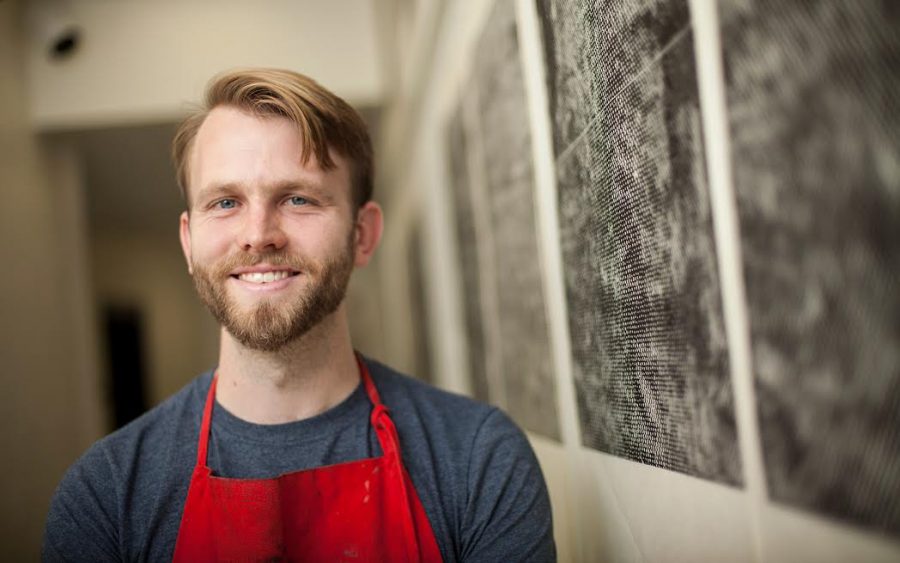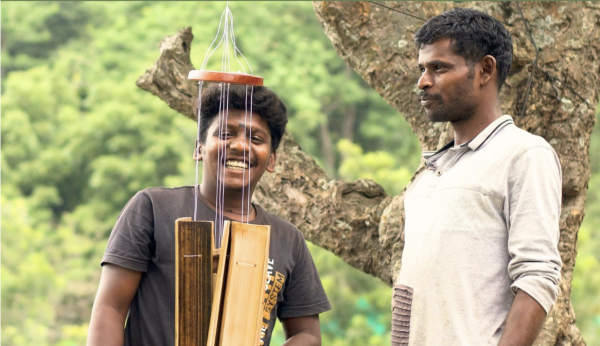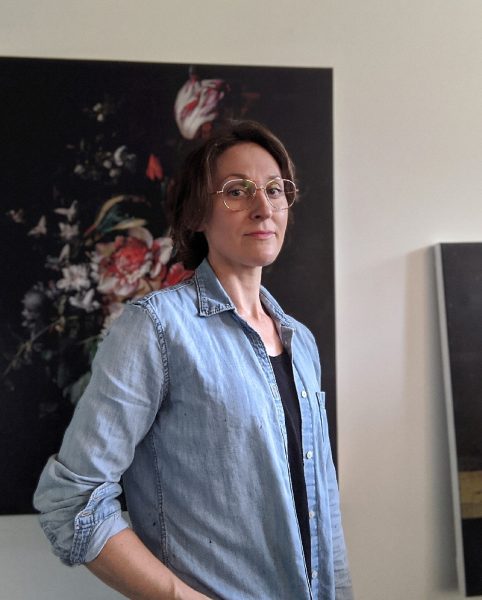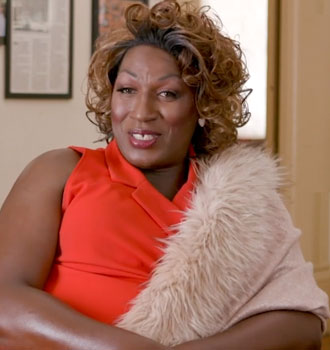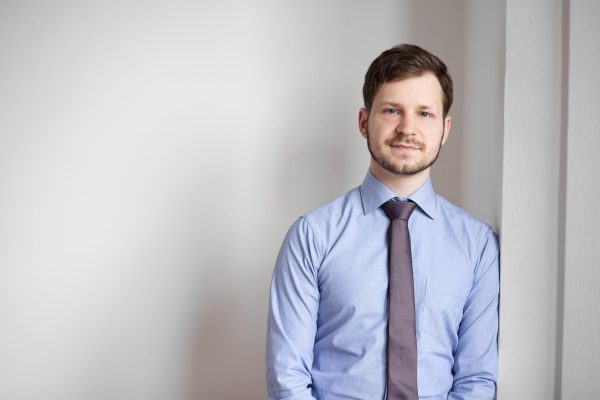Brendan Baylor, Interdisciplinary Artist
Photo courtesy of Brendan Baylor
Brendan Baylor, assistant professor of art and head of the print media division at Old Dominion University.
Brendan Baylor is an interdisciplinary artist whose work in printmaking, digital media, drawing, and installation is fueled by research and conceptual investigation. His Wednesday talk, “Landscapes of Power,” focused on the political ecology of place and several of his recent projects have investigated “extractive industry, settler colonialism, and white supremacy across the upper Midwest and East Coast.” This week, he will be working with Professor Corinne Teed’s reproducible media class. Baylor grew up in the Pacific Northwest, a landscape that juxtaposes wilderness and the urban and fueled his current interrogations of place and environmentalism. He received his BA from Portland State University and his MFA from the University of Iowa. He has displayed his work across the world, including at the Madison Museum of Contemporary Art, the Devos Art Museum, and the CONA Institute in Ljubljana, Slovenia. He is currently an assistant professor of art at Old Dominion University.
This interview has been edited for length and clarity.
You talked a lot about how you use research and concepts to inform your art. Why do you choose to express and present that research through art?
For me, art is powerful because it works primarily with bodily experience and emotions. There is a way that you can engage people on a different level with the creative work — with the creative manifestation of research — in a way that’s different than writing or graphing or more rational ways of working. I think one of the things that working on environmental issues shows is that the problem is not that we have a lack of knowledge; we have the information that we need. It’s that we haven’t built the collective feeling yet to act on. I think global warming is a really great example of that. We have the information; we just haven’t catalyzed a collective understanding or a collective feeling around which to act. I think art can help us to do that.
How do you perceive the role of art in the sociopolitical sphere, and in things like environmental issues?
I think the power of art is that it helps us see new things and it helps us take experiences that we already have and understand them in a new way. To me, new ways of seeing lead to new ways of thinking that often lead to new ways of acting. And that’s not a one-to-one process, but I do think that if we can’t perceive something, we can’t understand it, and if we can’t understand it, we can’t act on it. So what I’m working with, and what I think a lot of artists that are making effective socially engaged art are doing, is … helping us to perceive things differently. That altered perception can help us to act differently.
What role do you feel fear plays in your artistic process?
There are different feedback mechanisms within my process that let me know that I’m on the right track or that I’m challenging myself. That fear of failure, or taking on a project that is just on the edge of my ability to complete, is scary. If I’m not worried that something’s going to fail, it’s probably really comfortable for me, so I’m probably not growing as an artist or a thinker or a researcher. When I take on something that I’m worried — really worried — about, and afraid I’m going to fail at, it usually means I’m on the right track. There’s that fear aspect, but there’s also the aspect of having energizing conversations around the work or starting conversations about how we support ourselves in the world and our economy, and whether or not our society is as just as it could be. When the work is doing that for me or for other people in the gallery or outside of the gallery — when those conversations start happening that are really engaging people — that’s a good sign for me that the work is doing what it’s supposed to do. When I’m talking to my checker at the hardware store, who saw my piece in the paper, and then I get to talk with them for awhile about the history of extractive industry and industrial capitalism in our town, for me that’s a good moment [where] I’m on the right track; I’m doing what I should be doing.
Are there any other stories of feedback you’ve received that have been interesting to you?
I got a Facebook message about a month ago from one of the landowners who took one of our pipeline signs — my students and I did a collaborative project where we installed signs along Enbridge Line 5 to raise awareness about the pipeline existing, and also the risk inherent having 540,000 barrels of oil a day going through the ground underneath you — where she took a picture [and said], “I put the sign up on my property, you can see it from the road.” She seemed really energized about it, and then she was telling me about the other activist organizing that was happening around the pipeline — not as a result of the work we did necessarily, but in addition and as part of that larger social movement in the town around the pipeline. They organized a game of lacrosse over the top of the pipeline. It was a way of taking this colonial space and making it at least temporarily a more indigenous space, since lacrosse is a native sport. Seeing stuff like that, where there’s overlap with other organizing, or there’s non-art people who are invested in the work — I think that that feels more meaningful to me. I mean, obviously it’s nice when curators and other art professionals are interested in my work, but it’s nice when people feel moved to reach out and talk with me about the work.
What’s most exciting to you about the process of creating work?
I primarily do printmaking, so it’s very process-heavy. For me, there’s this moment where you’re pulling the paper off of your matrix — your block or your plate or whatever it is — you’re pulling the paper out and you’re seeing this image that you’ve been laboring over made material on the page. So for me, that moment of pulling the print off the press and seeing this thing made physical — I think that’s a really exciting moment. And there’s lots of different moments of seeing your idea finally come together. Like for the sign project, seeing the signs out in the landscape was really exciting. I think whenever things are finally starting to take physical form, and you can see them working the way you want them to in a space or on a page, that’s a really exciting moment. And that fear gives away to the realization that, “This thing I’m doing is going to work! It’s going to work! I’m going to succeed!” That’s a really great feeling.
What does the interaction between nature and people mean to you?
In a lot of my work, what I’m trying to do is erode a false barrier that we’ve created between human life and all of the other kinds of life on the planet. A lot of landscape images traditionally focus on nature totally devoid of people, like a sublime wilderness, or nature as a kind of idyllic, agrarian space where it’s rolling beautiful hills of wheat, or whatever it is. I think that those sort of images really close down our imagination of what our place in the world is. So for me, I’m trying to understand the complexity of how we interact with other kinds of life forms, and the landscape, and space, in order to think about a messier and more complicated relationship that we can have to the land that’s not based around keeping it pure or something like that. I think when we take people out of the landscape completely and the only good landscape is a wilderness, then we still have to do something with ourselves, and so it makes it hard for us to reimagine our relationship to the land when we’re excluding ourselves from it.
What advice would you have for people who are looking to make professional work and have art careers?
I work with lots of young people since I’m a college professor, and it’s sort of an ongoing conversation with my students about what advice I would have for them. [First] I would say, understand the professional landscape. Understand what you’re getting yourself into. Look at people whose work you respect, and then figure out how they got where they did. Did it involve them moving somewhere new? Did it involve them connecting in the right social networks with the right people, like curators or museum directors or friends? Understand that landscape — how do you get where you want to go? And then the second piece is to … understand yourself, and the process that you’re undertaking or undergoing as a creator and as a creative person. Thinking about [the answers to questions like] what are my motivations for making this? What do I want to get out of it? I think for most artists, their work is a very long-form investigation of themselves and the world and their relationship to it. It’s a process, and it’s a lifelong process. So I think for me, it’s like, understand the exterior context, and then understand what your internal motivations are and what’s driving you forward, and make sure you’re able to reconcile those or find some sort of path forward negotiating those two things. I think a lot of it is trying to figure out what kind of compromises you can make with the world as it currently exists, and what is core to you and driving your work forward that you don’t want to compromise. I think a lot of times, as younger creators, we are driven by ideals and possibilities. As you get older, you have to take these ideals and possibilities and then make them into something that exists in the world. And the world is a messy, unfair place — and so trying to figure out how you reconcile those two things I think is difficult and also specific to each person. Part of it is figuring out what your path forward is.


